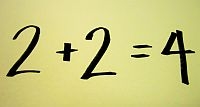 Thirty percent of Vermont’s
Thirty percent of Vermont’s
11th graders scored proficiently in the math portion of this year’s
NECAP state assessment tests. It’s a
figure that has prompted Vermont’s
Education Commissioner to form a panel dedicated to raising scores. We talk with the state’s Director of
Educational Assessment, Michael Hock, about the scores and about math curricula
in use across Vermont.
When do students begin work with calculators? What figures should they be memorizing? And when should algebra be introduced? We hear from Pam Cyr, a 5th grade math
teacher at Shelburne Community
School, and John Pandolfo, a math
teacher at Spaulding High
School in Barre. (Listen)
Also, every year for the past seven years, housing advocates have issued a report called Between A Rock and A Hard Place. The report tracks the affordability of housing in Vermont, when compared with wages. We talk about this year’s newly released report with John Fairbanks of the Vermont Housing Finance Agency. (Listen)
And, we continue our series of town postcards with a visit
to Londonderry. (Listen)
Emails from listeners–
Jeff in Middlesex–
"At least in Washington County I believe the math program is broken.
With Everyday Math Program students are not taught the basics of addition,
subtraction, multiplication, and division. If you need an example go to any
store
where a teenager is working and have them make change without looking
at the register. Math takes work to understand and the rules of math
have not changed. Educators are using our children to experiment."
Email from Joel–
I am a middle school teacher at a charter school in Massachusetts. Our students are among the top performers
in the state despite having 20% of students on IEPs and 85%+ qualifying
for free lunch. Our students enjoy this success because of our longer
school day (7:30-5:00, 2.5 hours for math and ELA) and we dedicate
separate blocks of time for math computations (1.25hr) and math problem
solving (1.25 hr), both very important. I went to school in Vermont
and have taught in public schools in Massachusetts where math programs
are changing constantly. More time on task and consistency = giving
students the chance to become top performers.